CAA News Today
Maggie Guggenheimer and Ellen Oh
posted by CAA — April 08, 2019
The weekly CAA Conversations Podcast continues the vibrant discussions initiated at our Annual Conference. Listen in each week as educators explore arts and pedagogy, tackling everything from the day-to-day grind to the big, universal questions of the field.
CAA podcasts are on iTunes. Click here to subscribe.
This week, Maggie Guggenheimer and Ellen Oh discuss how arts professionals contribute as contingent faculty.
Maggie Guggenheimer is Director of External Relations for Virginia Humanities (University of Virginia).
Ellen Oh is Director of Programs in the Office of the Vice President for the Arts at Stanford University.
New in caa.reviews
posted by CAA — April 05, 2019
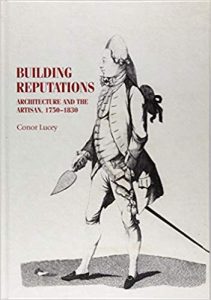
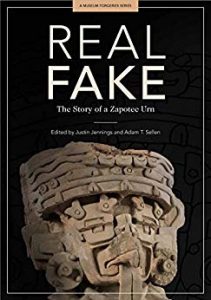 Nancy Kellar discusses Real Fake: The Story of a Zapotec Urn, edited by Justin Jennings and Adam T. Sellen. Read the full review at caa.reviews.
Nancy Kellar discusses Real Fake: The Story of a Zapotec Urn, edited by Justin Jennings and Adam T. Sellen. Read the full review at caa.reviews.
Carl Lounsbury writes about Building Reputations: Architecture and the Artisan, 1750–1830 by Conor Lucey. Read the full review at caa.reviews.
Member Spotlight: Nazar Kozak
posted by CAA — April 04, 2019
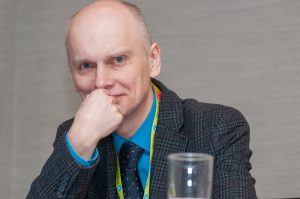
Nazar Kozak at the 2019 CAA Annual Conference. Photo: Ben Fractenberg
Up next in our Member Spotlight series, we are highlighting the work of Nazar Kozak, senior research scholar in the Department of Art History in the Ethnology Institute at the National Academy of Sciences of Ukraine, and an alumnus of the CAA-Getty International Program. Joelle Te Paske, CAA’s media and content manager, corresponded recently with Professor Kozak to learn more about his experiences at the Annual Conference, his current research, and his tips for scholars looking to extend their work internationally.
Joelle Te Paske: Hi Professor. Thanks for taking the time for our interview. So to begin, where are you from originally? What is the focus of your research?
Nazar Kozak: I am from Lviv, Ukraine, and I work in two fields simultaneously: medieval and contemporary art. The first one emerged from my interest in the cultural heritage of the region in which I live. My ongoing research in this field is focused on the sixteenth-century iconographic migrations of the Akathistos cycle across the post-Byzantine world from Venetian Cyprus in the South to the Tsardom of Muscovy in the North. Through this, I aim to discover artistic connections within this politically segmented realm that are not readily visible through archival data and thus to problematize nationalist narratives that have dominated Eastern European scholarship in the past. My second specialization emerged in recent years when issues of social justice and war came into the forefront in my country. I was driven to document and re-think artistic responses to the turmoil of events and through this to make my art history relevant to the times I am living through socially and politically. Currently, I am working on an article that explores how border art resists a global biopolitical divide.
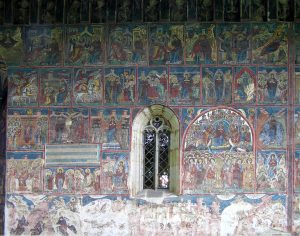
Akathistos cycle on the south facade of the Dormition Church in Humor, 1535. Photo: Nazar Kozak
JTP: What is your favorite thing about being a CAA member? Do you have a favorite memory?
NK: My favorite part of being a member is attending the Annual Conference. I remember the reaction of the audience to my talk at the Global Conversation session in 2017 when I shared my personal crisis in finding a motivation to continue writing art historical research when war broke out in my country and how I eventually found that motivation. The room was crowded and I remember the anxiety that I had before the session and the confidence I felt when I spoke and also during several moving conversations I had with attendees afterwards. That talk was published on the CAA website.
JTP: What is the most exciting part of your work currently?
NK: Currently and always the most exciting moment is when I realize that my work on a scholarly project is done; that is, when I can confirm my intellectual hypothesis and substantiate it with evidence that I genuinely believe to be true for now. This feeling, of course, does not last forever.
JTP: What would you say are some of the challenges?
NK: The major challenge is to find a sustainable answer for the Why question: Why am I writing a particular paper or monograph? And not just a random answer to tell others, but an answer I can tell myself and stick with, at least until I finish writing. The access to material and writing itself is a challenge, of course, but I think when you know your stake in it you can handle all the rest.
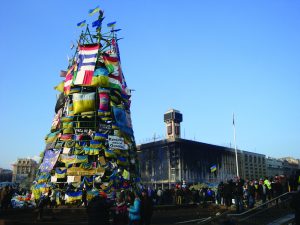
A view of Independence Square in Kyiv after violent clashes with the police during the Maidan Revolution, January 21, 2014. Photo: Borys Harasymiv
JTP: What is a favorite study you’ve worked on over the years? Any recommendations for our readers?
NK: Right now it is my article on art interventions during the Ukrainian Maidan revolution published in Art Journal in 2017.
I would recommend Decolonizing Nature: Contemporary Art and the Politics of Ecology by T.J. Demos, because it is a great piece of engaging scholarship and because art and ecology is a crucial issue that is relevant to us all.
For those who are interested in online resources on Byzantine art I would recommend The Digital Research Archive for Byzantium (DIFAB) and North of Byzantium.
JTP: What is your experience with Humanities Commons and the CAA-Getty program?
NK: I have used Humanities Commons several times as a platform for online discussions which have worked well as a supplement for in-person exchanges. Among other online platforms that I use is Academia.edu though I see its commercialization as controversial. The CAA-Getty International Program is the major vehicle that facilitates scholars from countries where art history has fewer resources than in West Europe or North America to bring their voice and to build their professional networks on the global scale. I participated in that program three times: first as a scholar and twice as an alumnus. This year I was selected to collaborate with the program’s director Janet Landay and the current CAA International Committee chair Pearlie Rose Baluyut to design and moderate the preconference colloquium on international topics in art history and I was honored to have that opportunity not only for my benefit but to contribute to the program as well. I might add that because of my work with the CAA-Getty program I have recently joined CAA’s International Committee, where I look forward to continuing to work on recruiting and interacting with international scholars.
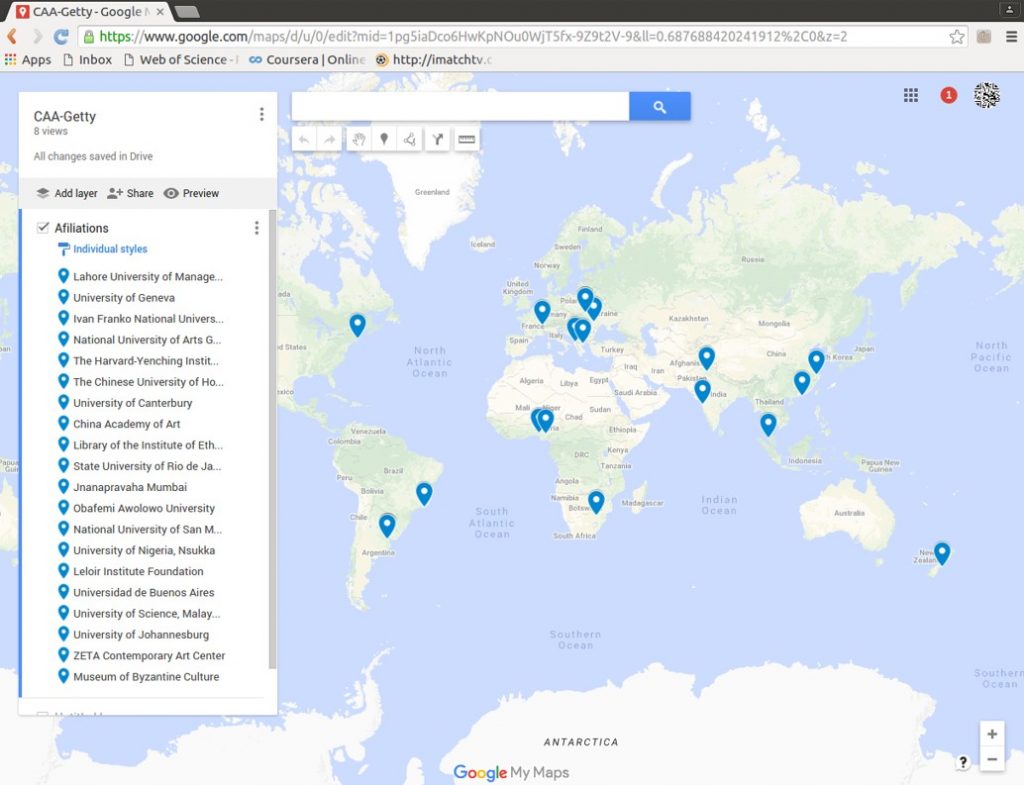
Map of home institutions of 2019 CAA-Getty International Program participants. Learn more.
Nazar Kozak is a senior research scholar in the Department of Art History in the Ethnology Institute at the National Academy of Sciences of Ukraine. Previously he also taught at the Medieval and Byzantine Studies Department at the Ivan Franko National University of Lviv. After receiving his PhD from the Lviv Academy of Arts in 2000, he spent a year in Greece under the auspices of the State Scholarships Foundation (IKY). Kozak is a recipient of research and publication grants from the American Council of Learned Societies (ACLS) and an alumnus of the CAA-Getty International Program. In 2016-2017, he was a visiting Fulbright Scholar in The Ukrainian Museum in New York. Kozak is the author of a monograph on image and authority in Kyivan Rus’ and articles dealing with Byzantine and post-Byzantine wall-paintings preserved in Ukraine. His ongoing research is focused on the sixteenth-century iconographic migrations of the Akathistos cycle across the post-Byzantine world. More recently, Kozak has also begun to work on topics in contemporary art. His article on the art interventions during the Ukrainian Maidan published in the Spring 2017 issue of the Art Journal received an honorable mention as a finalist for that year’s Art Journal Award.
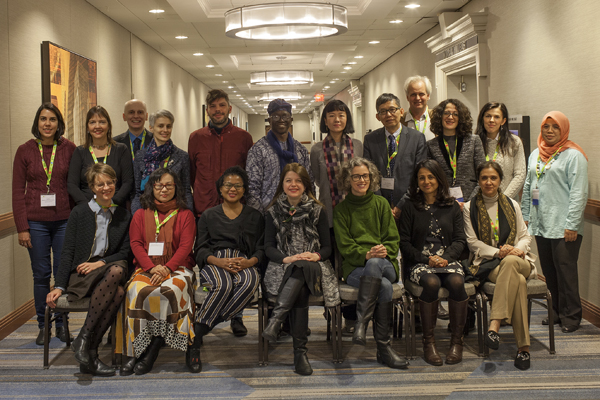
Nazar Kozak (third from top left) and fellow 2019 CAA-Getty International Program participants.
News from the Art and Academic Worlds
posted by CAA — April 03, 2019
Want articles like these in your inbox? Sign up: collegeart.org/newsletter
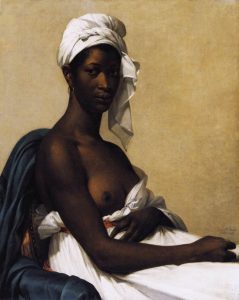
Marie-Guillemine Benoist’s “Portrait of a Negress” (1800) has been retitled “Portrait of Madeleine” for a new exhibition at the Musée d’Orsay. Image: Wikimedia Commons
Musée d’Orsay Puts Focus on Overlooked and Anonymous Black Models in French Masterpieces
The exhibition temporarily retitles works featuring historically anonymous Black models to honor their sitters. (Hyperallergic)
Adjunct Professors at Miami Dade College, America’s Largest Undergrad College, Are Unionizing
The new bargaining unit will include as many as 2,800 workers. (Miami New Times)
Poland’s Right-Wing Government Accused of Hijacking Prize-Winning Museum
One of Poland’s most prominent museums has strongly opposed an attempt by the country’s culture ministry to change its structure. (The Art Newspaper)
Though More Women Are on College Campuses, Climbing the Professor Ladder Remains a Challenge
A look at the numbers from Women in the Academy, a longitudinal study conducted from 2003 to 2012. (Brookings)
This Library Takes an Indigenous Approach to Categorizing Books
Xwi7xwa library in British Columbia is decolonizing the way information is sorted, cataloged, and shared. (Yes Magazine)
To Survive, Small Colleges Are Rethinking the Liberal Arts
As higher ed consolidates, these institutions are restructuring curriculum, campuses, and even tuition. (Education Dive)
CWA Picks for April 2019
posted by CAA — April 02, 2019
CAA’s Committee on Women in the Arts selects the best in feminist art and scholarship to share with CAA members on a monthly basis. See the picks for April below.
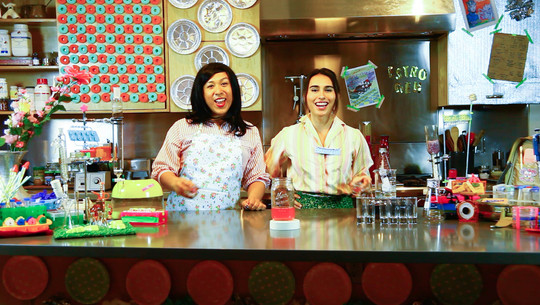
Video still from Mary Maggic, Housewives Making Drugs, 2017, on view in Producing Futures—An Exhibition on Post-Cyber-Feminisms at the Migros Museum für Gegenwartskunst through May 12th. Courtesy the artist.
SHE MATTERS
March 6 – April 26, 2019
Wright Gallery, Texas A&M University, College Station, Texas
Taking the 2015 arrest and subsequent death of Sandra Bland as its starting point, this exhibition aims to give a platform to women of color to respond creatively to issues around family separation, law enforcement brutality, sexual assault, and violence. Multi-media artist Rabéa Ballin used neon to highlight to represent Sandra Bland’s case number, in Case Number 02-F-00151, bringing attention to identity which is typically lost, and dehumanized in the prison system. Rosine Kouamen’s richly hued Required Solidarity, a fabric work using prints from Cameroon with women and a woman letting a dove go in front of Africa, is embroidered with, according to the artist, “powerful words to emphasize the progress that still needs to happen to have a truly equal society, where women, especially women of color are protected by the law and not victims of it.” Ann Johnson’s two-sided glass quilt, The Narrative, displays the scripted police transcript of Sandra Bland’s traffic stop, and on the other, the traditional “North Star” pattern which guided numerous slaves to freedom, as well as the written names of women who lost their lives to violence or law enforcement, with repeated words, “she matters / say her name / say it” emphasizing the significance of the exhibit; “We must tell these stories,” Johnson writes in her statement, “She matters.” Other equally impactful work in the exhibit includes laser print transparency on wood by Regina Agu, plaster relief and mixed media silhouettes by Lovie Olivia, fabric cast aluminum and mixed media fabrics by Kaneem Smith, and linocuts by Monica Villarreal. The nontraditional multi-colored painted pedestals and walls create an apt, progressive atmosphere for this inspiring art.
YELENA POPOVA, JOANNA RAJKOWSKIA, JAN ERIC VISSER: WHAT BRANCHES GROW OUT OF THIS STONY RUBBISH?
March 22 – May 4, 2019
l’étrangère, London
l’étrangère gallery in London brings into conversation the works of Yelena Popova, Joanna Rajkowska, and Jan Eric Visser who critically respond to ecological concerns in the context of industrial capitalism, neo-liberalism and consumerism. It is an intimate exhibition, which encourages reflection of the material legacy of Modernism. Rajkowska’s site-specific installation entitled Trafostation (2016) is introduced through a photographic documentation. The project, in Wrocław, Poland, turned a defunct 1930s transformer station into a living sculpture, which keeps evolving. The artist encouraged non-human organisms to take over the building and erode the concrete structure by growing plants and creating a new habitat. Rajkowska’s feminist ecological ethics is reflected in Popova’s practice. Called by the artist ‘Medieval Modernism’, it is concerned with the threshold states between the past and the future and the linear and cyclical modes of growth. Post-petrochemical Paintings (2016-ongoing) are made from mixed pigments from soil and wood ash collected by the artist during a number of walks in parks and forests, which are then grind according to medieval recipes. Jan Eric Visser makes sculptures from inorganic household garbage. The process, which he calls ‘Form Follows Garbage’, gives waste a new identity and emphasise the importance of valuing all matter. The artist is also engaged with issues concerning the post-industrial future, which is reflected in his use of two new innovative building materials called Translucent concrete, capable of degrading nitrogenoxides causing smog and Aquadyne, enabling the rooting of plants and vegetables.
PRODUCING FUTURES: AN EXHIBITION ON POST CYBER-FEMINISMS
February 16 – May 12, 2019
Migros Museum für Gegenwartskunst, Zurich
2017 marked the 20th anniversary of a meeting that took place at Documenta X entitled ‘The First Cyberfeminist International’. Issue that were raised then and revisited in a number of events that followed contributed to the emergence of a new movement branded as post-Cyberfeminism, a term coined in the early 1990s. The group exhibition Producing Futures—An Exhibition on Post-Cyber-Feminisms, including the works of artists such as VNS Matrix and Lynn Hershman Leeson, Wu Tsang, Guan Xiao and Anna Uddenberg, Juliana Huxtable, Shana Moulton or Anicka Yi, among others, at the Migros Museum für Gegenwartskunst in Zurich explores feminist methods of engagement in the era of developing networked technologies and in the post-internet era, which, on the contrary to what was predicted in 1990s, apart from functioning as spaces of liberation and arguable self-empowerment, introduced disciplining structures reinforcing hierarchies and patriarchal systems of power. Artists involved in the show question the legacy of the cyberfeminist movement, its currency and relevance while working through the intersections between the body, technology and gender across the real and the virtual. Exhibited works engage with Donna Haraway’s proposed alternative model of knowledge formation called “SF,” an abbreviation for “science fiction” but also “speculative feminism,” a practice open to speculations and intellectual experiments where alternative visions of the future may emerge. A number of events are organised in parallel to the exhibition. The Revolution of Digital Languages or When Cyber turns to sound of Poetry. A Symposium on Post-Cyber-Feminisms, organised in cooperation with MAS in Curating, Zürcher Hochschule der Künste and the PhD in Practice in Curating on April 11th and 12th, further explores and engages with issues raised at the show.
JUST TO BE ALIVE
March 7 – May 31, 2019
Sixteen Twenty-Eight Gallery, Cincinnati, Ohio
In celebration of Women’s History Month, Cincinnati’s 1628 Gallery devotes their spring exhibition to a juried exhibition featuring work by twenty local self-identifying women artists. The painting, collage, photography, sculpture, fiber art and more, reflect the complexity, challenge and passion of being a contemporary woman, as relayed in the title, referencing poem by Mary Oliver: “it’s a serious thing / just to be alive / on this fresh morning / in this broken world.” Kim Flora’s mixed media collage, something about those volcanos, too emits the multifaceted, sometimes daunting, sometimes rich, living experience of women through the bright red and orange fiery hues above the torn, charcoal paper and what appears to be a section of a woman in etching, slight smile barely seen in the bottom corner, her body ripped at right. The over thirty other works surely emphasizes the rich breadth of media and perspectives by women in the area in this “curated workspace” in downtown Cincinnati.
SERA WATERS: GOING ROUND IN SQUARES
March 9 – June 30, 2019
Ararat Gallery TAMA, Ararat, Victoria, Australia
Sera Waters is Adelaide based artist, arts writer and academic, who through her textile work engages with issues concerning boundaries and domesticity, and more specifically the concept of “home” in Australia in the aftermath of colonization. Those places of trauma and hauntings in settler colonial homes she calls “genealogical ghostscapes.” Going Round in Circles presented in Ararat Gallery TAMA explores the boundaries that have shaped Australian life since colonization. Waters calls them ‘geometric discipline’, suggesting structures of discomfort imposed on individuals aimed at disciplining them into docile subjects. She shares her frustration of ‘being stuck in a loop’ understood as repetitiveness and going round the same silencing and colonizing arguments and denials. Textile work, which is performed on the gridded warp and weft of fabric, is in itself an example of a discipline reinforcing social status of women as home makers confined to domestic spaces and their gendered roles often focused on practices of comforting and caring. Waters’s exercises disruptive agency, for example in Sampler for a Colonised land, 2018-2019, by working in repeated loops and rings within textiles’ squares and grids. She uses found materials such as pelts, needlework or wool, among others, to break the boundaries of colonizing structures and enable new patterns for shared togetherness.
SIXTY YEARS
From April 22, 2019
Tate Britain, London, UK
On April 22nd Tate Britain opens a new temporary display on its main floor as part of its commitment to increase the visibility of women in Tate’s galleries. It features approximately 60 works from Tate’s collection by around 30 women artists working across diverse media, including Mona Hatoum, Rachel Whiteread, Sarah Lucas, Monster Chetwynd, Susan Hiller and Bridget Riley, among others. The display focuses on narratives in British history from 1960 until the present day, covering a wide range of issues such as immigration, race, class struggle, Britain’s colonial past, sexual identity, feminism, AIDS activism and club culture. Particularly interesting is Black Audio Film Collective’s film Handsworth Songs (1986; directed by John Akomfrah and produced by Lina Gopaul), which was filmed during the 1985 riots in Handsworth and London. It raises not only issues specific to the riots and their cultural, social, and political context but also the continuity of some of those unresolved struggles reflecting on brutal policing and racism and their current insurrections. Tate’s promise to increase the visibility of women artists is reflected in its 2019 program, which features (across its galleries) other exhibitions and displays celebrating women.
See the Results of the 2019 CAA Annual Conference Survey
posted by CAA — April 02, 2019
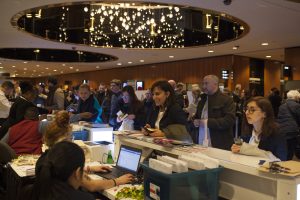
Registration at the 2019 CAA Annual Conference in New York. Photo: Ben Fractenberg
Thank you to everyone who participated in our 2019 Annual Conference survey! Each year we work to make the Annual Conference better than the year before. It’s a large effort that takes the time of many people. We only do it once year but we need to have it perfect from that first hour registration is open, and your direct feedback helps us make that happen.
Here is what you told us about your experience this year:
- Up from last year, 79% of you were satisfied with the Annual Conference
- 75% liked the content of the sessions but only half of you thought the sessions represented a balance of time periods
- 75% liked your online experience with CAA
- 74% liked the Book and Trade Fair
- 67% thought that the conference was welcoming and inclusive
Here’s what you liked about the conference:
- Professional development offerings and workshops
- Networking opportunities
- Diverse sessions, good variety, good from a scholarly point
- Staff—easy to find someone to help
- Very smooth check-in process
- Pay-as-you-Wish Day Pass
- Conference in one building (as opposed to LA)
- New York is a good destination – museums and galleries
- Length of the sessions, committees’ lunch, opportunity to participate on a panel
- Mentoring
- Welcoming and stimulating, not the “high-brow” style of years’ past; friendly, collegial spirit
- More inclusion of design
- Many people got to participate
- Planning features on website
- Childcare
- Book and Trade Fair
- Convocation
- Open sessions on diversity and other topics
- Tables where people could sit and talk
Here is what you want to think about for next year’s conference:
- Conference was too long, and conference fatigue was inevitable
- Need more offerings for mentoring and interviewing
- Bring back the free paper schedule program
- 90-minute sessions are too short for 5 presenters; 8:30 is too early for some sessions
- Too many things are scheduled at the same time
- Too much for art historians rather than artists
- Not enough for art historians
- New York is always a problem with weather and too expensive ($13 for a glass of wine?)
- Could never find the soul to the conference —leaves me feeling sad about our field
- Very few senior scholars or mid-career attended, making it feel like a graduate student mentoring event
- Too many sessions on the same topics and at the same time
- Needs more transparency on how sessions are selected and put together
- There was a lack of diverse topics
- Way too large and overwhelming—no one had a chance to network—conference is no longer an academic one
- Abstracts should be available online
- The website is very confusing
- Too many presenters read from their papers, looking down
- Nothing to attract scholars or historians
- Why are there almost no artists outside of academia at CAA
Here is what you told us about you:
- About 67% of you are art historians; 24% are practicing artists
- 77% of you are associated with a college or university and nearly half of you are either full-time faculty or department chairs
- 75% of you pay for your membership fees yourself; about half of you are fortunate to have your employer to pay for it
Planning to submit a proposal for CAA 2020? The submissions portal for next year’s Annual Conference in Chicago closes April 30. We invite proposals for sessions, lightning rounds, poster sessions, and workshops from visual arts professionals working across the field in all disciplines.
Rejoin CAA in April and Get 25% Off Your Membership
posted by CAA — April 01, 2019
There is strength in numbers. Every day, CAA is working on behalf of professionals in the visual arts to create resources, build networks, and encourage scholarship at the highest levels. The louder our voice, the more we can do.
Rejoin CAA during the month of April and get 25% off any Tiered membership level.
Plan on participating in the 2020 Annual Conference in Chicago, February 12-15, 2020? Submissions are due April 30, 2019.
Join your colleagues and fellow professionals in creating the programming for the largest gathering of art historians, artists, designers, curators, arts administrators, museum professionals, and others in the visual arts.
Now is the perfect time to rejoin and save.
Offer valid from April 1–April 30, 2019, 11:59 PM EST, to individual lapsed members for a one-year membership. Discount applies only to those whose membership has lapsed between January 1, 2012 and January 1, 2018. Log in to your CAA account to view the discount code.
Questions? Contact Member Services at 212-691-1051, ext. 1.
Alan Crockett and Alan Crockett, Jr.
posted by CAA — April 01, 2019
The weekly CAA Conversations Podcast continues the vibrant discussions initiated at our Annual Conference. Listen in each week as educators explore arts and pedagogy, tackling everything from the day-to-day grind to the big, universal questions of the field.
CAA podcasts are on iTunes. Click here to subscribe.
This week, Alan Crockett and Alan Crockett, Jr. discuss different approaches relative to community.
Alan Crockett is professor emeritus at Ohio State University.
Alan Crockett, Jr., is director at Klamath/Siskiyou Art Center, and an instructor at College of the Siskiyous.



